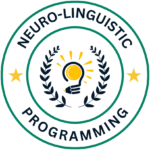Many marketers and copywriters are constantly seeking innovative ways to enhance their writing techniques and connect with their target audience on a deeper level. Neuro-Linguistic Programming (NLP) offers valuable tools and strategies that can revolutionize the way we approach copywriting. In this comprehensive guide, we will probe into the world of NLP and provide you with a step-by-step breakdown of how to effectively incorporate NLP techniques into your copywriting process. By mastering these techniques, you can create compelling and persuasive content that resonates with your readers on a subconscious level, ultimately leading to higher engagement and conversion rates.
Types of Neuro-Linguistic Programming Techniques
To effectively apply neuro-linguistic programming techniques in copywriting, it is crucial to be aware of the various types of techniques available. These techniques can help you understand and influence the behavior of your target audience, ultimately leading to more effective communication and persuasion in your copywriting efforts. By utilizing a combination of these techniques, you can create compelling and influential copy that resonates with your audience on a deeper level.
| Sensory Acuity | Rapport Building |
| Anchoring | Mirroring and Matching |
| Meta-Models | Milton Models |
| Reframing | Presuppositions |
| Swish Pattern | Fast Phobia Cure |
Sensory Acuity and Rapport
Even before entering into the technical aspects of neuro-linguistic programming, developing sensory acuity and rapport is key. Sensory acuity involves sharpening your awareness of verbal and nonverbal cues from others, allowing you to better understand and connect with your audience. Building rapport is about establishing a level of trust and understanding with your audience, creating a more receptive environment for your messaging.
Meta-Models and Milton Models
Meta-models and Milton models are fundamental to neuro-linguistic programming techniques. Meta-models focus on clarifying and refining communication by questioning and gathering more specific information. On the other hand, Milton models involve using vague language patterns to induce trance-like states and open the mind to suggestion. Understanding and utilizing these models can greatly enhance the effectiveness of your copywriting efforts.
Assume that integrating these models strategically can lead to more compelling and influential copy that speaks directly to the subconscious mind of your audience.
Factors to Consider Before Using NLP Techniques in Copywriting
It is important to consider several factors before incorporating Neuro-Linguistic Programming (NLP) techniques into your copywriting strategy. These factors can greatly impact the effectiveness of your communication and the overall success of your copywriting efforts.
Audience Analysis
Clearly understanding your target audience is crucial before implementing NLP techniques in your copywriting. You need to analyze your audience’s demographics, psychographics, preferences, and pain points to tailor your messaging effectively. By knowing your audience inside and out, you can craft compelling copy that resonates and motivates them to take action.
Cultural and Contextual Sensitivity
Copywriting that incorporates NLP techniques must be culturally and contextually sensitive to avoid potential misinterpretations or backlash. It’s imperative to consider the cultural backgrounds, language nuances, and societal norms of your target audience. Adapting your language and messaging to align with these sensitivities can enhance your copywriting’s impact and ensure it is well-received.
- Copywriting that is oblivious to cultural and contextual differences can alienate audiences and diminish the effectiveness of your message.
After considering these factors, you can effectively utilize NLP techniques in your copywriting to create persuasive and engaging content that connects with your audience on a deeper level.
Step-by-Step Guide to Applying NLP in Copywriting
| Establishing Clear Objectives |
|---|
Establishing Clear Objectives
The first step in applying NLP techniques to copywriting is to establish clear objectives. This involves defining the purpose of the copy, identifying the target audience, and determining the desired outcome. By clearly outlining what you want to achieve with your copy, you can tailor your message to resonate with your audience and achieve your goals effectively.
| Crafting the Message with NLP Strategies |
|---|
Crafting the Message with NLP Strategies
Crafting compelling copy using NLP strategies involves understanding how language influences the subconscious mind. By incorporating techniques such as mirroring and matching, sensory language, and embedded commands, you can create copy that speaks directly to your audience’s emotions and drives them to take action. These strategies can help you establish rapport, build trust, and ultimately persuade your audience to engage with your content.

Tips for Enhancing Copy with NLP Techniques
Once again, using Neuro-Linguistic Programming (NLP) techniques can significantly enhance the effectiveness of your copywriting. By incorporating these strategies, you can tap into the subconscious mind of your audience and create compelling, persuasive content that resonates with them on a deeper level. Perceiving the power of NLP in copywriting is vital for standing out in a crowded digital landscape. For more insights on how NLP can supercharge your copywriting, check out Discover How NLP Can Supercharge Your Copywriting …
Language Patterns and Persuasive Phrasing
There’s an art to crafting copy that uses specific language patterns and persuasive phrasing to influence the reader. By understanding the language patterns that evoke emotions and trigger responses, you can tailor your content to communicate more effectively with your target audience. Using words that spark curiosity, create urgency, and establish credibility can make a significant impact on the success of your copy.
Anchoring and Visualization for Engagement
Persuasive copywriting goes beyond just words on a page. By incorporating anchoring and visualization techniques, you can create a sensory experience for your audience that resonates with them on a deeper level. Another powerful strategy is to anchor positive emotions to your brand or product through vivid imagery and compelling storytelling. By creating an emotional connection through visualization, you can increase engagement and drive action from your audience.
Pros and Cons of Integrating NLP into Copywriting
| Pros | Cons |
| Enhanced persuasion techniques | Potential ethical concerns |
| Improved communication with target audience | Overuse may seem manipulative |
| Increased conversion rates | May not resonate with all consumers |
| Better understanding of consumer behavior | Requires thorough training to master |
The Benefits of Using NLP in Copy
Even when integrated with caution, NLP techniques can significantly enhance the effectiveness of copywriting. By applying NLP principles, copywriters can create compelling content that resonates with the audience on a deeper level, leading to increased engagement and conversion rates.
Potential Challenges and Ethical Considerations
For copywriters, integrating NLP techniques into their work can present challenges in terms of ethical considerations. It is vital to maintain transparency and avoid using manipulative tactics that can potentially harm the brand’s reputation and credibility. Copywriters should always prioritize the well-being and trust of their audience above all else.
Conclusion
As a reminder, utilizing Neuro-Linguistic Programming techniques in copywriting can significantly enhance the effectiveness of your messaging by tapping into the subconscious minds of your audience. By following the step-by-step guide provided, you can leverage techniques such as mirroring, pacing, and anchoring to create compelling and persuasive copy that resonates with your readers on a deeper level. Remember to practice and tailor these techniques to suit your specific audience and objectives, and watch as your copywriting efforts yield more impactful results.
FAQ
Q: What is Neuro-Linguistic Programming (NLP)?
A: Neuro-Linguistic Programming (NLP) is a psychological approach that involves analyzing strategies used by successful individuals and applying them to reach a personal goal.
Q: How can NLP techniques be used in copywriting?
A: NLP techniques can be used in copywriting to understand how language patterns and communication styles influence the audience’s perception and behavior, allowing copywriters to craft more persuasive and engaging content.
Q: What are some common NLP techniques used in copywriting?
A: Some common NLP techniques used in copywriting include mirroring and matching, pacing and leading, sensory language, anchoring, and reframing.
Q: How can mirroring and matching be applied in copywriting?
A: Mirroring and matching involve subtly imitating the language patterns, behavior, and body language of the audience to build rapport and establish a connection, making the copy more relatable and engaging.
Q: What is pacing and leading in NLP copywriting?
A: Pacing involves aligning with the audience’s current beliefs and experiences, while leading involves introducing new ideas or perspectives to lead them towards a desired outcome, making the copy more persuasive and influential.
Q: How does sensory language enhance copywriting using NLP techniques?
A: Sensory language appeals to the audience’s senses, emotions, and memories, creating a more vivid and immersive experience that captivates their attention and makes the copy more compelling and memorable.
Q: What is anchoring and how is it used in NLP copywriting?
A: Anchoring involves associating a specific stimulus with a particular emotional response, allowing copywriters to evoke desired feelings or reactions in the audience by strategically placing anchors throughout the copy, influencing their perception and behavior.



